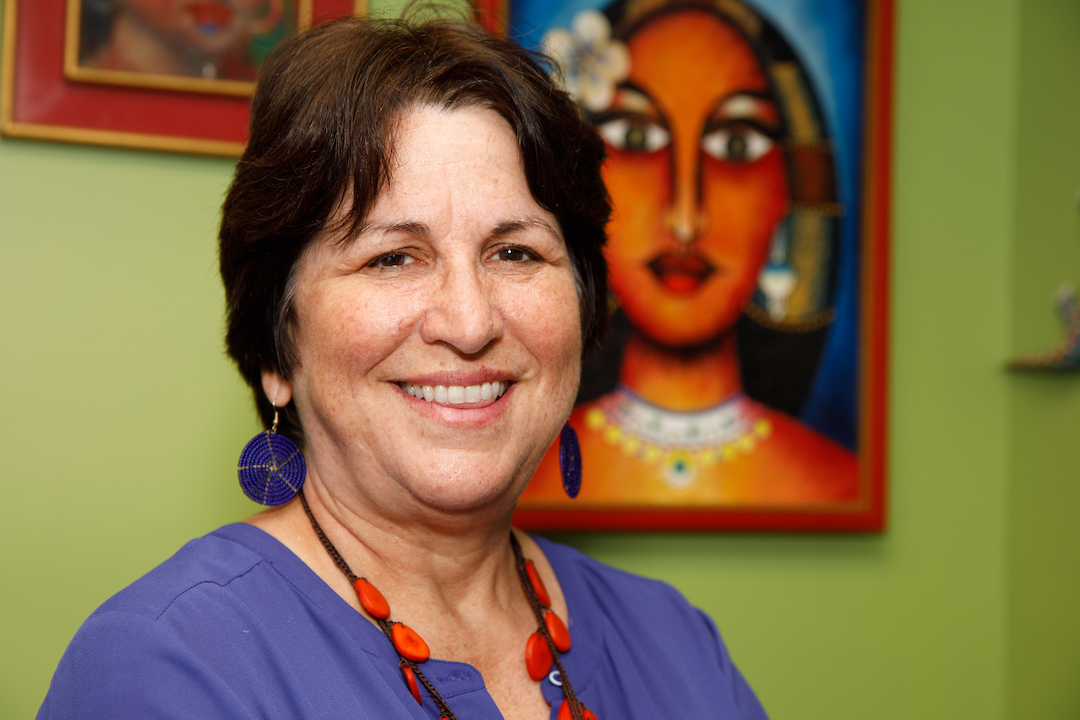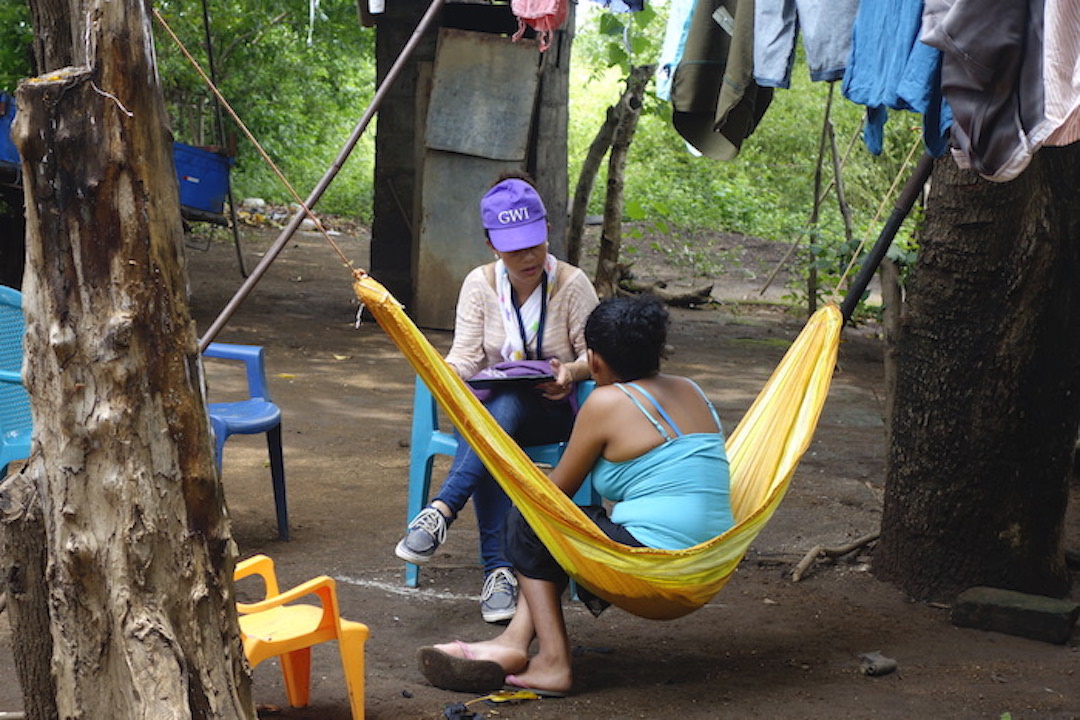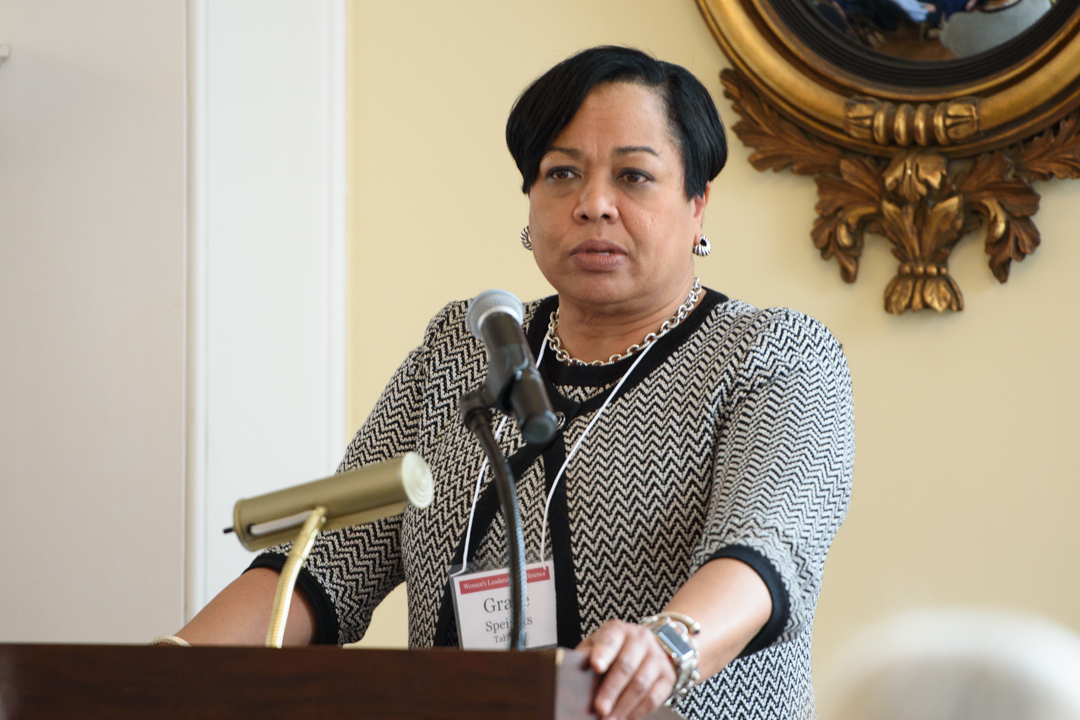By Tatyana Hopkins
Across the globe 35 percent of woman will experience sexual or physical intimate partner violence, according to the World Health Organization (WHO). Researchers at the George Washington University’s Global Women’s Institute (GWI) recently recorded a sharp decline in intimate partner violence against women in Nicaragua over a 20-year period between 1995 and 2016. The results are published in a new follow-up study conducted in the city of León after an initial prevalence study.
GWI completed the study in partnership with Autonomous National University of Nicaragua at León and InterCambios, a Nicaraguan nongovernmental organization.
Mary Ellsberg, GWI director, discussed the new study with GW Today:

Mary Ellsberg is the founding director of the George Washington University Global Women's Insitute. (Photo by: William Atkins/GW Today)
Q: What had the initial 1995 prevalence study revealed about intimate partner violence in Nicaragua?
A: The original study found that one out of every two women had experienced physical violence from an intimate partner in their lives. It also found that one out of four had experienced violence in the 12 months prior to the interview.
This was astonishing at the time because very few population-based prevalence studies had been carried out anywhere in the world. Even now, most evaluations of violence prevention interventions only measure change in a particular group of people that have participated in a program such as group workshops or microfinance programs. There are few examples of studies that measure change at a population level, and none that have looked at such a long time period.
It was such a taboo subject, and many women were either ashamed or afraid to talk about their experiences, so people in Nicaragua assumed that domestic violence was not very common. Our study not only showed that domestic violence was extremely pervasive but also, through additional epidemiological studies, we found that it was a risk factor for many other serious public health problems in Nicaragua such as low birth weight, infant mortality, depression among women, adolescent pregnancy and maternal mortality. The findings contributed to getting the first law against domestic violence passed in Nicaragua in 1996.
Q: What do the findings from the latest study tell us about preventing violence against women and girls?
A: People often think of violence as something that will always be with us, that it is inevitable. But our research shows that this is not true. Violence is actually preventable.
We expected to find a decrease in intimate partner violence compared to the first study because there had been so much work in the intervening years to bring attention to violence against women, both within Nicaragua as well as globally. But we never imagined that the reduction would be as large as it was — a 70 percent reduction in women who reported experiencing physical partner violence in the last 12 months. That is really extraordinary.
In addition to the prevalence figures, we have been analyzing data around women's knowledge of the laws in Nicaragua, their use of services and their views around the acceptability of violence. There were large improvements in all of these areas, particularly among young women. This means that the inter-generational transmission of violence is being broken, and young men and women are no longer repeating the violent behavior they have seen growing up. That is huge.
However, we found that not all forms of violence are the same. We saw huge decreases in physical and emotional violence, but no significant decreases in the levels of sexual violence by partners. Also, we found very high levels of sexual harassment and assault by non-partners through electronic means, on buses and in schools and workplaces. So even with the changes in physical intimate partner violence, our findings show that there is still a lot more to be done.
Q: How were these gains achieved over the 20-year period?
A: The women's movement in Nicaragua was really flourishing in the early 1990s, making violence against women and girls one of the most urgent issues that women wanted to address. Women's crisis centers led by grassroots women activists popped up all over the country, and the Nicaraguan Network of Women against Violence carried out campaigns to demand better laws and programs to protect women.
In 1996, one of the first laws against domestic violence was passed, and specialized police stations for women and girls were set up throughout the country. Even though there were a lot of problems with enforcement of the laws, it meant that women who grew up after 1996 knew that violence against women was against the law from the time they were little, which impacted their sense of their own rights as citizens. We found that young women now are much more likely to say that violence is never justified than young women 20 years ago.
Q: Now that the study has been completed, what further work needs to be done related to these issues?
A: We need to continue to research the impact of different strategies to prevent violence against women and girls at scale. We also need to understand more about the specific mechanisms that are most effective. In a study such as ours, we cannot tease out the effect of specific measures such as legal reform, training of police and judges, awareness campaigns or provision of services.
We also need to understand how to prevent violence in different contexts and different populations, for example, people with disabilities or marginalized populations. The context in Nicaragua is very different from South Sudan, for example, which has been suffering acute conflict for decades, and we need more evidence about what measures are most important in these settings.
Q: Since 2018, protests have erupted across Nicaragua with demonstrators decrying President Daniel Ortega’s government. Are you concerned that the political crisis in Nicaragua and the rise of COVID-19 could undermine efforts to prevent violence?
A: The study was carried out in 2016, and then the Ortega regime was already closing democratic spaces and some progressive programs such as the specialized women's police stations. Since the protests began in April 2018,and were brutally repressed by the police, more than 100,000 Nicaraguans have fled, including one of our co-authors, William Ugarte, who was the director of research center at Leòn University. The repression is still ongoing, and women's rights activists have reported that domestic violence and femicides are on the rise. So, the results about what was achieved in the past is bittersweet for members of the Nicaraguan women's movement. It is an indication of what was achieved historically, but also a reminder of what has been lost during recent years of political repression.
With regards to COVID-19, the Nicaraguan government has been criticized for not providing leadership in preventing the disease's spread. Civil society groups have been the ones promoting social distancing and hygiene measures. But we know that the pandemic is increasing the levels of domestic violence everywhere, and there is no longer capacity to respond to it.
To learn more about research on violence against women and girls and efforts to advance gender equality, visit GW’s Global Women’s Institute.




